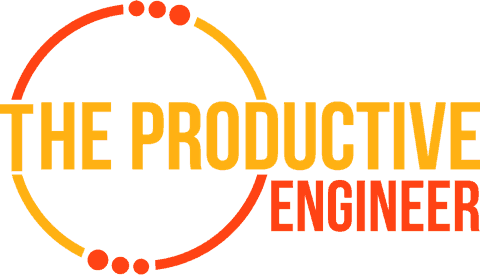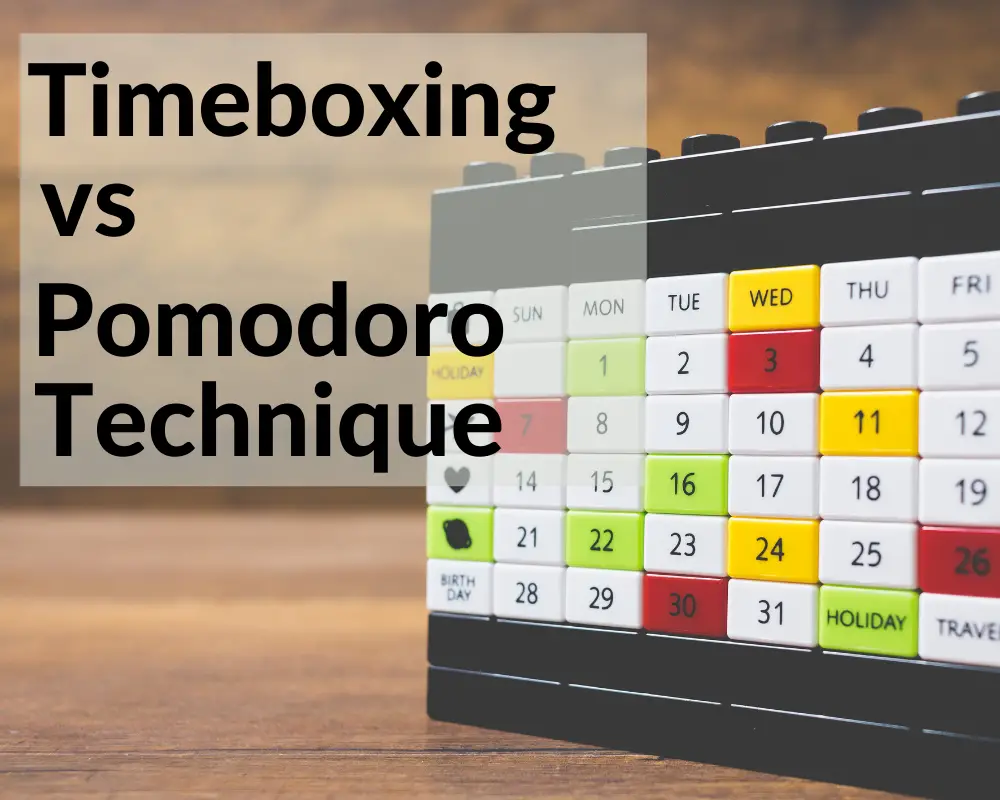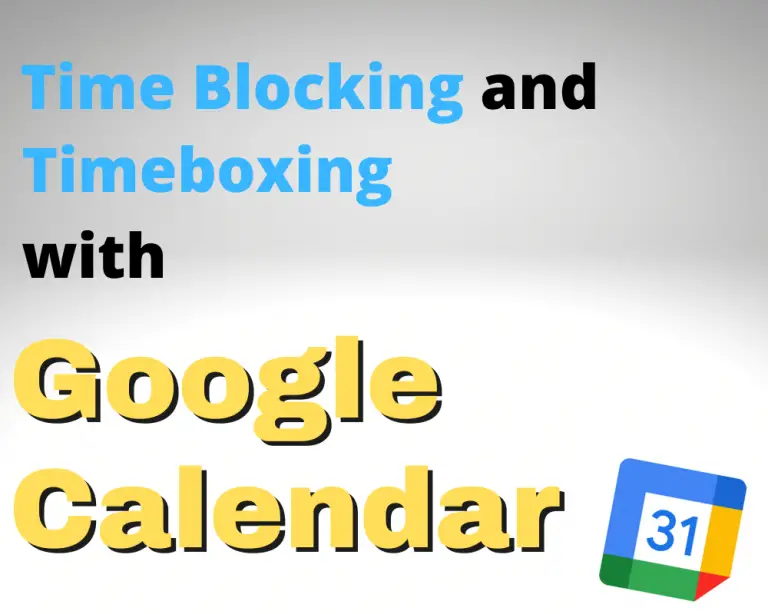Timeboxing vs Pomodoro Technique – The Ultimate Guide

If you are a productivity enthusiast, you probably have heard about timeboxing and Pomodoro Technique. But how do they compare? This article will review both timeboxing and the Pomodoro Technique and outline their similarities and differences.
So what are Timeboxing and the Pomodoro Technique?
Timebox is a time management technique where you allocate a specific time to a particular task. The Pomodoro technique closely resembles timeboxing, but it emphasizes the amount of time of the Timebox itself. This method involves:
- scheduling your task for 25 minutes
- followed by a quick break
- then after four tasks, you get a longer break of 20-30 minutes.
So how can you use these methods to optimize your productivity? Let’s find out.
What Is Timeboxing?
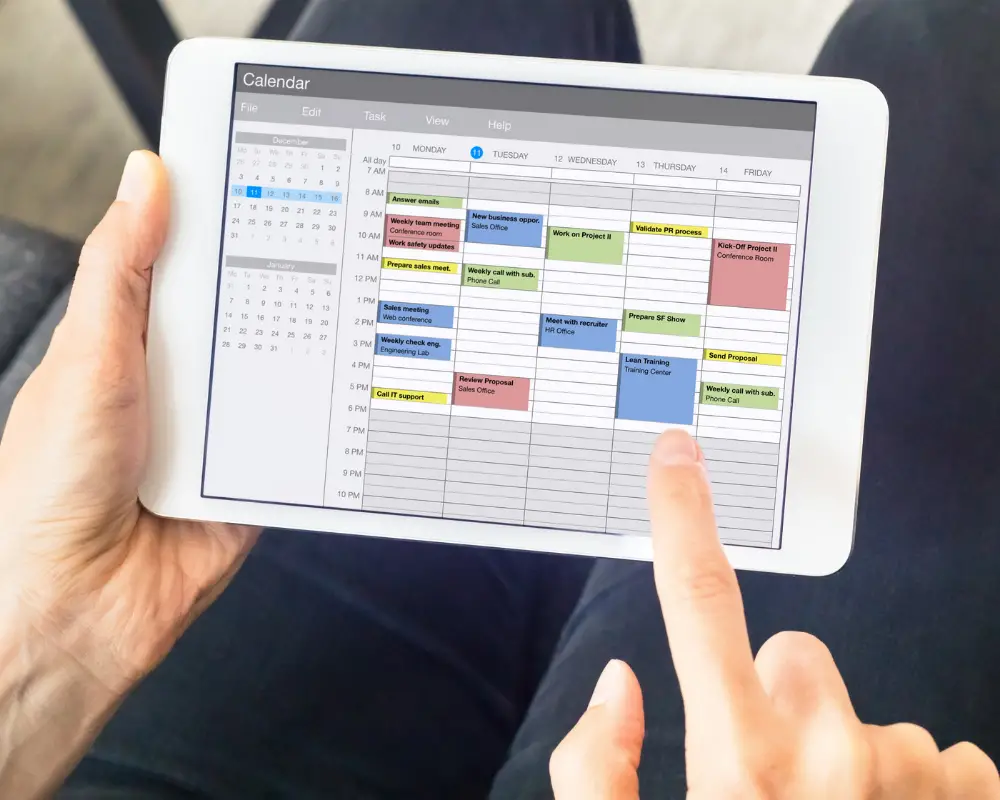
Timeboxing is a proven technique used for time management and self-discipline. The technique focuses on having a defined time for a specific task. You allot a particular time of work for the task and stick to it. Short intervals of breaks split the work time.
You may be spending days trying to get yourself to start a task. If you use timeboxing, then you can accomplish those tasks you always put off. Setting up a block of time dedicated to the completion of your task will help focus you. The time block’s specificity enables you to get over procrastination and laser in on the task at hand.
If you use timeboxing consistently in your workflow, you will be amazed at how you can overcome the natural tendency to procrastinate.
Timeboxing focuses on how much time you spend, not whether you completed the task. You may find that a project or task needs to spread across multiple time blocks.
The Difference between Timeboxing and the Pomodoro Technique

The Pomodoro Technique seems, at first glance, very similar to Timeboxing. Both the Pomodoro Technique and Timeboxing deal with allotted time to complete a task. The difference is that timeboxing doesn’t define a specific amount of time but rather that the time is in a continuous block.
In the Pomodoro technique, you split your larger tasks into small segments of 25 minutes each. After completing one patch of 25 minutes, you take a five (5) minute break, and after four intervals of work, you have a rest interval of 30 minutes.
Francesco Cirillo firstly introduced the method in the 1980s. The technique works because it creates a sense of urgency that you don’t have all day to work on the project. The 25 minutes of work-time make you highly focused on the job. It also allows you to get over the mental barrier of getting started by giving you a precise, relatively small amount of time to start.
For more information on the Pomodoro Technique, check out my article on how to use the Pomodoro Technique to get things done.
Can You Use the Timebox and Pomodoro Technique Together?

The Timebox and Pomodoro are two different concepts, but some characteristics overlap. In a timebox, you just set some time for a specific task and stick to it. It’s like a schedule for the day. But Pomodoro is splitting a task into 25-minute blocks of work broken up by breaks.
So there is no need to be concerned about applying both concepts in your workflow simultaneously. Timeboxing will help you focus on the bigger picture of the task, while the Pomodoro technique will help you do the task with less time wasted.
Advantages of Timebox
Help you prioritize your tasks

When you allocate a block of time to a particular task, you will understand what the tasks are and how important they are. In this way, you can prioritize your tasks, which will help you stay focused and do what is necessary.
If you are a Notion user, check out my guide to Time Blocking in Notion.
Measure your progress
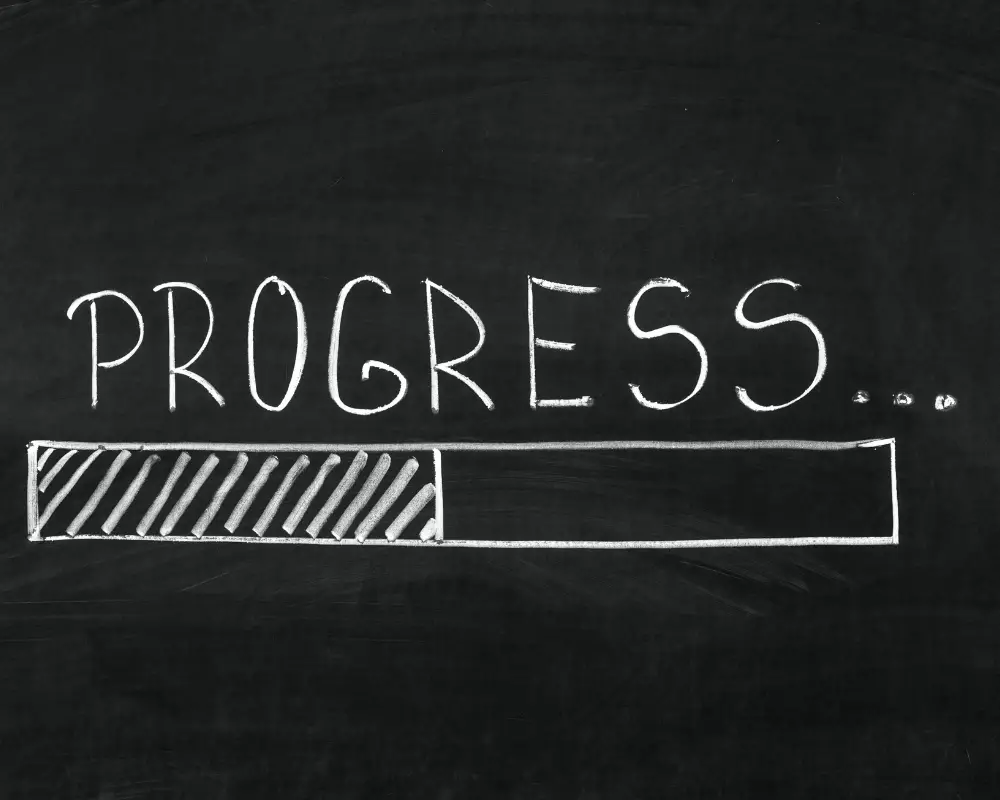
You will be able to measure your performance and evaluate the progress with yourself. There is no outer person required for motivation. When you measure your performance, you are self-accountable. This factor will motivate you to perform better in the subsequent milestones you set for the project.
Have a big picture

When you apply the timeboxing concept, you have all the tasks on your board. These little tasks form a grander picture of something, maybe a new idea, startup, or business. So timeboxing allows you to focus on the bigger picture of the project.
Advantages of Pomodoro
Reducing distractions

Distractions can extend the amount of time needed to complete a task or project. The Pomodoro technique provides you with a short and achievable milestone that makes you highly engaged with your tasks and reduces distractions. That is the core reason why the Pomodoro Technique is so effective.
Measure and evaluate your performance

You can only measure your productivity through self-evaluation. You cannot measure performance without specific goals and timelines. The Pomodoro Technique provides a framework that you can use to evaluate yourself.
After you do a 25-minute task, spend an extra minute evaluating your performance and comparing how well or worse you did with the previous one. In this way, you will not just increase your productivity but also increase your engagement.
Source of motivation

Seeing yourself complete pomodoros will become a motivating factor to complete more. Conversely, when you notice you are not completing your pomodoros, you will work hard to increase your capacity and uplift productivity.
By these 25 minute pomodoros, you no longer need a motivational factor as your work is now your motivation. That’s the best part of the method.
Better health
Research says that taking consistent short breaks helps you focus (Source). Systems like the Pomodoro Technique with its short work intervals followed immediately by breaks allows you to stay energized and focused on the task at hand.
Want More Tips and Tricks? Subscribe to our Newsletter!
If you haven’t already subscribed, please subscribe to The Productive Engineer newsletter. It is filled with tips and tricks on how to get the most out of the productivity apps you use every day. We hate spam as much as you do and promise only to send you stuff we think will help you get things done.
Check Out Our YouTube Channel!
We have a YouTube channel now and we are working hard to fill it with tips, tricks, how-tos, and tutorials. Click the link below to check it out!
Do you use the same password for multiple sites? Do you have trouble remembering all your passwords? You should try 1Password! 1Password is secure and allows you to log in to sites and fill forms securely with a single click. I use 1Password for all my passwords and it really makes managing all my passwords simple.
For more information on 1Password and to get a 30-day free trial, go to 1Password at the link below:
1Password – The world’s most-loved password manager
Check out our Resources Page
Check out our resources page for the products and services we use every day to get things done or make our lives a little easier at the link below:
Looking to Get Started Blogging or on YouTube?
Getting started can seem daunting and scary (I know it was for me) but it doesn’t have to be. I was very lucky to find a program that that has helped me grow my blog to over 35,000 page views and a YouTube channel that is growing month-over-month.
Project 24 by Income School is the program that I have used. I have been a member for over a year now and just renewed my membership. I cannot recommend Project 24 enough! For more information on Income School, click the link below:
Project 24 byIncome School – Teaching You How to Create Passive Income from Blogs and YouTube
